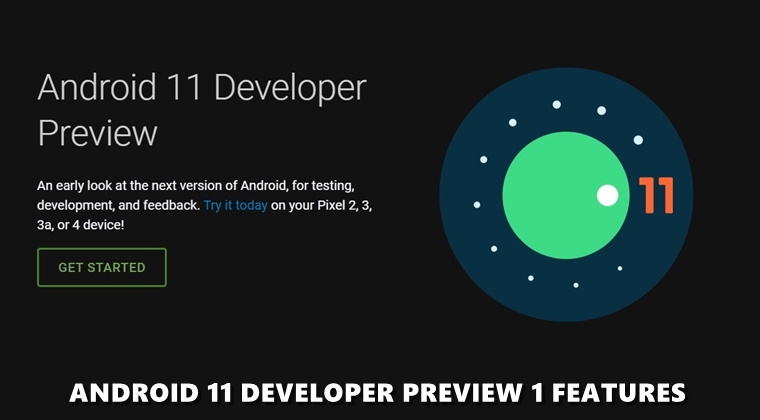
Today Google released the first developer preview of Android 11. It is indeed a laudable effort considering they had done so way ahead of its schedule. Any of the users having a Pixel 2, Pixel 3, Pixel 3a, Pixel 4, or a Project Treble compatible device can refer to our detailed guide if they wish to try it out. As is always the case, Google announces most features of any newer Android build at its annual I/O Conference. But the Silicon Valley giants have already shared some of the privacy and security features related to Android 11 Developer Preview 1. So let’s check them out.
Scooped Storage in Android 11 Developer Preview 1
Many user’s private data are stored in the data/media location. However, apps after being granted the READ_EXTERNAL STORAGE permission were easily able to view all these personal files of users. Do note that by external storage we mean the data/media location. To curb the overly broad use of this permission, Google introduced the concept of Scooped Storage. Beginning with Android 11 first developer preview, the apps using the said permission will only be able to see the directories of these private files.
But what about file explorers that need access to your files? Well, they can use the Storage Access Framework to let users select files using the system file picker. Likewise, this framework will also help these apps to get access to the root directory of data/media and hence to its subdirectory. This will allow the file explorer to deal with the files placed under external storage. But don’t worry. Until you explicitly grant this permission, apps wouldn’t be able to access your private data stored there.
New Project Mainline Modules in Android 11 Developer Preview 1
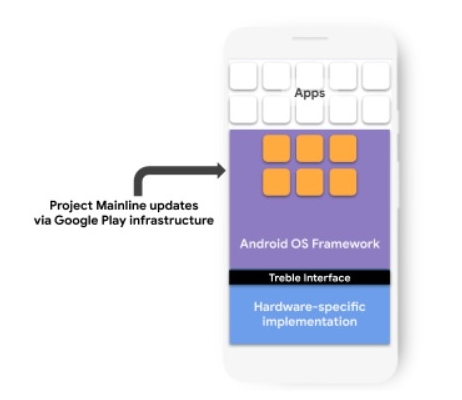
Google introduced the concept of Project Mainline in Android 10. For the unaware, this project makes it quick and easy to get updates for core Android components. Earlier, Google would release these software updates. This would then be taken over by the OEMs to optimize it according to their requirements. This is where the updates generally took a lot of time.
As a result, Google allowed these OEM’s to take a back set and they would themselves release these updates directly through Play Store. If you are running Android 10, head over to Settings > Security > Google play system update.
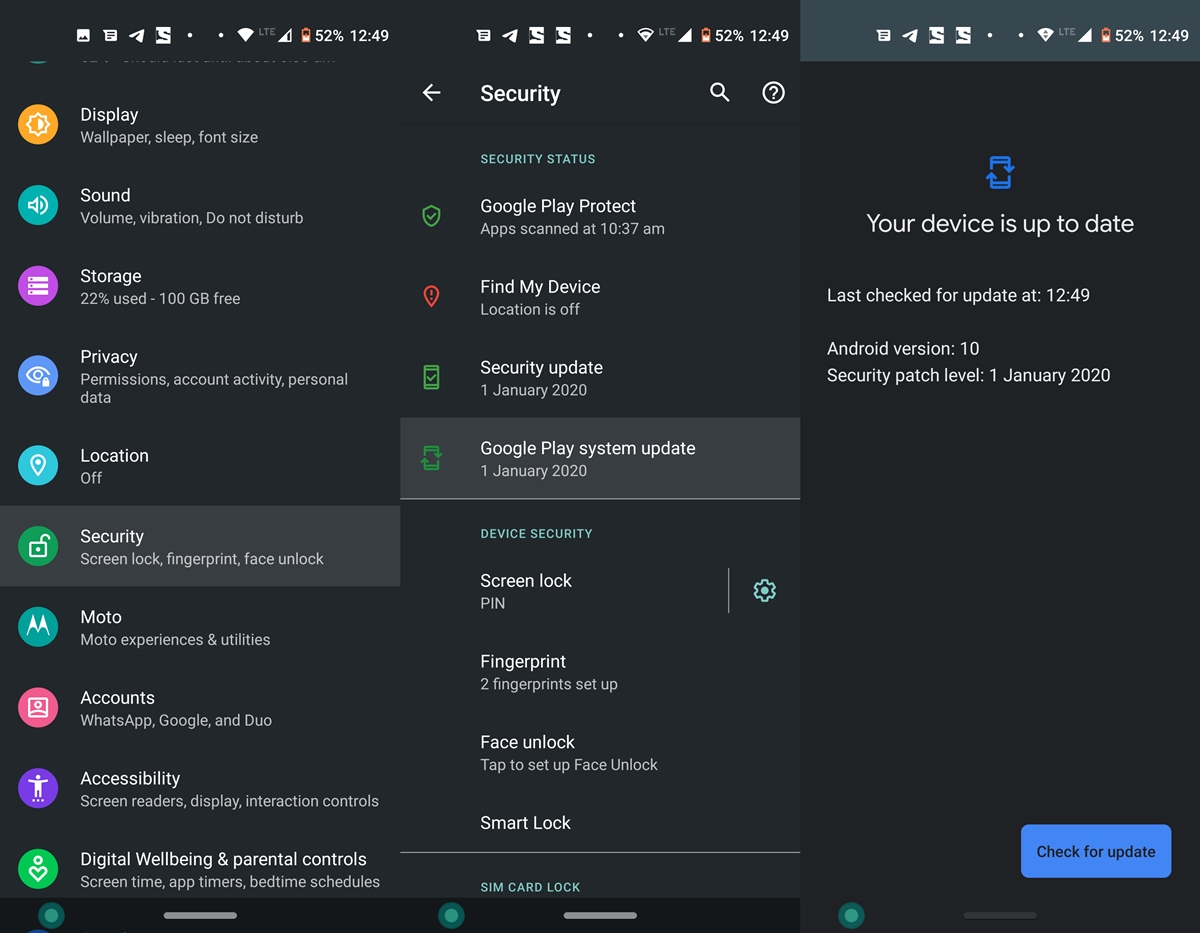
Coming back, each of these updates either takes the form of an APK file or an APEX file. Last year, Google bought about 11 new Project Mainline modules. With Android 11 Developer preview 1. this has been expanded to 20. These include the new permission modules, new media provider modules among others.
One-Time Permissions
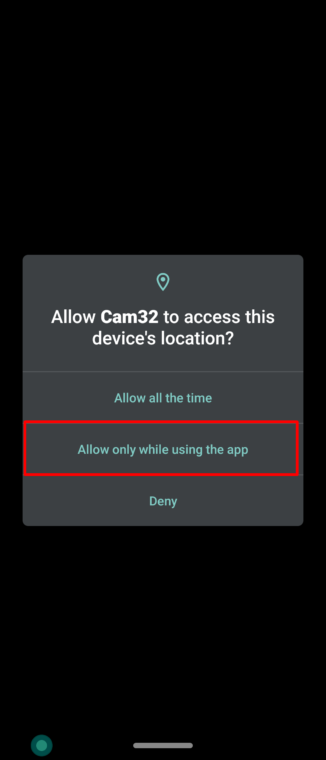
Some much-needed changes to permissions beginning with Android 6.0. Before that, you had to give permissions to apps before they have been installed. Beginning with Marshmallow, came the concept of runtime permissions. This meant that the apps could only ask for permission after it has been installed. Moreover, they should also do so via a clearly visible pop-up dialog box.
Beginning with Android 10, we saw these permissions getting revamped even further. You could now also allow the app to use the permission only while it’s running in the foreground. Unfortunately, this only covered the location permission.
But with Android 11 first developer preview, One Time permission has been introduced. These types of permissions are valid as long as you are using the app. Once you minimize the app, the app loses access to that said permission and will have to ask again for it. Furthermore, apart from location, they have been expanded to other domains like camera and microphone permissions as well.
Changes to the BiometricPrompt
Earlier developers had to separate different APIs for different biometrics. For example, you had the fingerprint manager API to take care of fingerprint authentications. Similarly, Samsung had its separate API for the IRIS Scanner technology. But beginning with Android Pie, we saw the introduction of the BiometricPrompt API.
This unified all these separate biometrics APIs into a single bunch for authentication purposes. As a result, the system now justs needs a single biometric authentication platform to authorize the users using any of their preferred choices (fingerprint, IRIS, face scanner).
And now, with Android 11 Developer Preview 1, Google has added three new levels of authentications. These include the Weak, Strong and Device Credentials. It is now up to developers to decide which type of biometric authentication they, or rather their apps will require.
Sharing of Data BLOBs in Android 11 Developer Preview 1
BLOBs or Binary Large OBjects are a collection of binary data that are stored as a single entity inside the database. They usually store images, videos, and other media objects. With Android 11 Developer Preview 1, we have seen the introduction of the BlobstoreManager API. This API will help in a more secure and easier sharing of data blobs with one another.
So these were some of the new features and additions to the Android 11 Developer Preview 1. We will be regularly covering all the new changes, updates and releases of these developer previews, beta and also the stable build of Android 11 as and when they get released. So stay tuned!

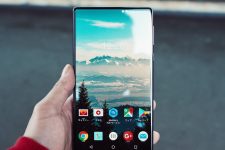

Join The Discussion: